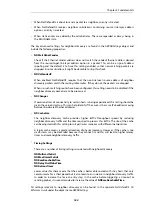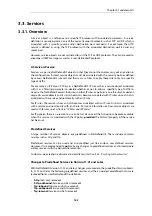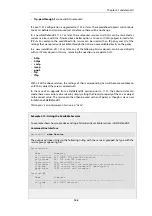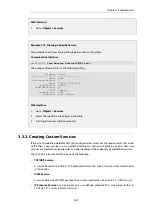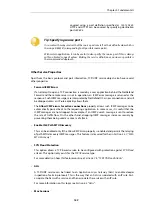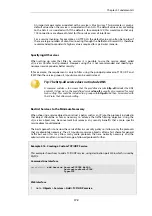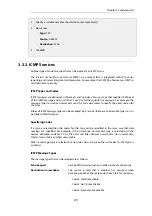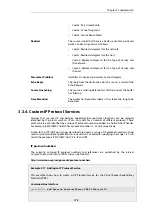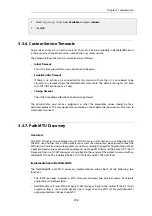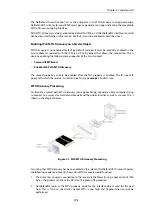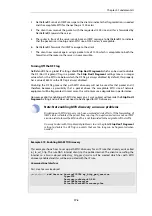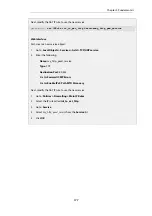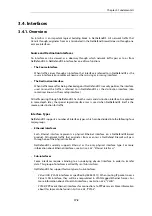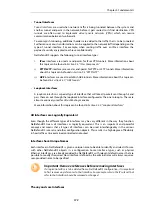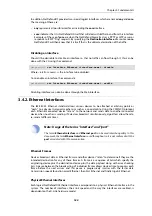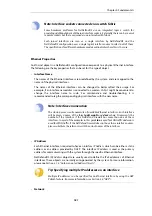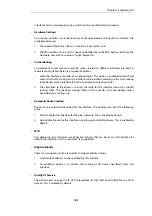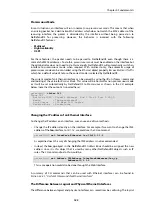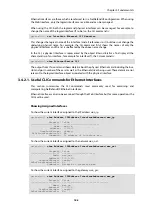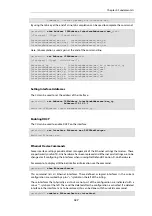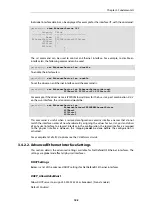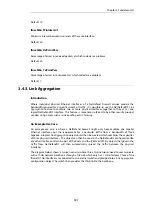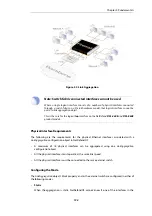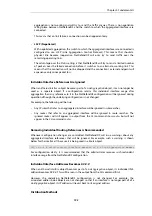
3.4. Interfaces
3.4.1. Overview
An
Interface
is an important logical building block in NetDefendOS. All network traffic that
transits through, originates from or is terminated in the NetDefend Firewall, does so through one
or more interfaces.
Source and Destination Interfaces
An interface can be viewed as a doorway through which network traffic passes to or from
NetDefendOS. A NetDefendOS interface has one of two functions:
•
The Source Interface
When traffic arrives through an interface, that interface is referred to in NetDefendOS as the
source
interface (also sometimes known as the
receiving
or
incoming
interface).
•
The Destination Interface
When traffic leaves after being checked against NetDefendOS's security policies, the interface
used to send the traffic is referred to in NetDefendOS as the
destination
interface (also
sometimes known as the
sending
interface).
All traffic passing through NetDefendOS has both a
source
and
destination
interface. As explained
in more depth later, the special logical interface
core
is used when NetDefendOS itself is the
source or destination for traffic.
Interface Types
NetDefendOS supports a number of interface types, which can be divided into the following four
major groups:
•
Ethernet Interfaces
Each
Ethernet interface
represents a physical Ethernet interface on a NetDefendOS-based
product. All network traffic that originates from or enters a NetDefend Firewall will pass
through one of the physical interfaces.
NetDefendOS currently supports
Ethernet
as the only physical interface type. For more
information about Ethernet interfaces, see
Section 3.4.2, “Ethernet Interfaces”
.
•
Sub-interfaces
Some interfaces require a binding to an underlying physical interface in order to transfer
data. This group of interfaces is called
Physical Sub-Interfaces
.
NetDefendOS has support for two types of sub-interfaces:
•
Virtual LAN
(VLAN) interfaces as specified by IEEE 802.1Q. When routing IP packets over a
Virtual LAN interface, they will be encapsulated in VLAN-tagged Ethernet frames. For
more information about Virtual LAN interfaces, see
•
PPPoE
(PPP-over-Ethernet) interfaces for connections to PPPoE servers. More information
about this topic can be found in
.
Chapter 3: Fundamentals
178
Summary of Contents for NetDefendOS
Page 30: ...Figure 1 3 Packet Flow Schematic Part III Chapter 1 NetDefendOS Overview 30 ...
Page 32: ...Chapter 1 NetDefendOS Overview 32 ...
Page 144: ...Chapter 2 Management and Maintenance 144 ...
Page 284: ...Chapter 3 Fundamentals 284 ...
Page 392: ...Chapter 4 Routing 392 ...
Page 419: ... Host 2001 DB8 1 MAC 00 90 12 13 14 15 5 Click OK Chapter 5 DHCP Services 419 ...
Page 420: ...Chapter 5 DHCP Services 420 ...
Page 573: ...Chapter 6 Security Mechanisms 573 ...
Page 607: ...Chapter 7 Address Translation 607 ...
Page 666: ...Chapter 8 User Authentication 666 ...
Page 775: ...Chapter 9 VPN 775 ...
Page 819: ...Chapter 10 Traffic Management 819 ...
Page 842: ...Chapter 11 High Availability 842 ...
Page 866: ...Default Enabled Chapter 13 Advanced Settings 866 ...
Page 879: ...Chapter 13 Advanced Settings 879 ...

